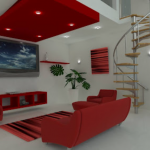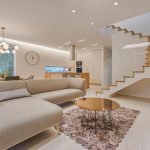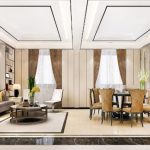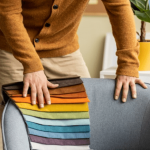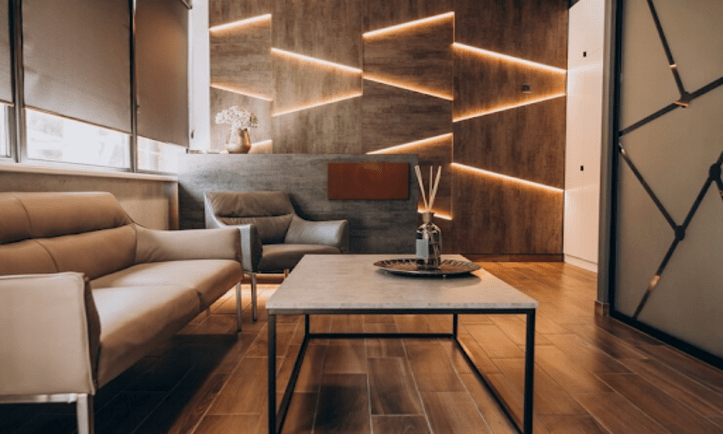
Beyond the Walls: How Architecture and Interior Design Shape Our Communities
We often think of Architecture And Interior Design as solely aesthetic endeavors—ways to beautify our surroundings and create a space that reflects our personal style. But the impact of these fields goes far beyond visual appeal. The built environment, from grand public spaces to intimate living rooms, plays a powerful role in shaping our communities and influencing our interactions, emotions, and well-being.
Building Connections: Architecture as a Social Fabric
Architecture doesn’t exist in a vacuum. Buildings are integral parts of our communities, serving as landmarks, fostering interaction, and defining a place’s character. Consider the bustling town square, a central hub where people gather, socialize, and participate in events. The design of the square, with open spaces, inviting seating, and perhaps a central fountain, actively encourages these connections.
On a larger scale, architectural movements can reflect and shape the social values of a time period. Art Deco architecture, with its emphasis on glamour and modernity, mirrored the Roaring Twenties’ spirit of optimism and innovation.
Interior Design: Cultivating a Sense of Belonging
While architecture shapes the external environment, interior design focuses on the spaces we inhabit. A well-designed interior fosters a sense of belonging and community within a building. Think of a community center with a welcoming lobby with comfortable seating areas and bright lighting. This design creates a space where people feel comfortable to start conversations and connect with others.
Interior design also plays a crucial role in creating functional and inspiring workspaces. Collaborative work areas with movable furniture and writable walls encourage teamwork and idea-sharing, fostering a sense of community within a company.
The Emotional Impact of Design
A recent study by imm cologne highlights the powerful link between design and our emotions. The study found that elements like natural light, open spaces, and biophilic design (incorporating nature) can create feelings of well-being and reduce stress. Conversely, poorly lit, cramped spaces can contribute to feelings of isolation and anxiety.
Architects And Interior Designers understand this connection and use their expertise to create spaces that evoke specific emotions. A hospital waiting room, for instance, might use calming colors and soft lighting to create a sense of tranquility for patients and families.
Designing for the Future
As our communities evolve, so must the way we design our spaces. With increasing urbanization and a growing focus on sustainability, architects and interior designers are challenged to create buildings that are functional, aesthetically pleasing, and environmentally responsible. This might involve using sustainable materials, incorporating energy-efficient features, and designing spaces that promote pedestrian traffic and community interaction.
How Design Shapes Our Behavior
Beyond aesthetics and functionality, architecture and interior design play a fascinating role in shaping our behavior. The spaces we inhabit subconsciously influence how we interact with others, navigate our surroundings, and even our own sense of self. Here’s how design psychology comes into play:
Spatial Perception:
How a space is designed affects how we perceive its size and scale. High ceilings, for example, create a feeling of spaciousness and openness, encouraging a sense of freedom and collaboration. Conversely, low ceilings can feel confining and promote a sense of intimacy. Architects and designers use this knowledge strategically to create specific experiences within a space.
Color Psychology:
Colors have a profound impact on our emotions and behavior. Warm colors like red and orange are known to be stimulating, while cool colors like blue and green have a calming effect. Understanding these associations allows designers to create spaces that evoke specific moods. A vibrant red accent wall in a restaurant might encourage conversation and energy, while a spa might utilize calming blue tones throughout to promote relaxation.
Wayfinding and Flow:
A space’s layout can guide our movement and behavior. Open floor plans with clear pathways encourage interaction and a sense of community, while winding corridors with hidden corners can create a feeling of mystery and intrigue. Designers can strategically use furniture placement and traffic flow to encourage collaboration in workspaces or create a sense of privacy in residential areas.
Sensory Experience:
A well-designed space engages all of our senses. Natural light exposure promotes well-being, while carefully planned acoustics can create a sense of focus or a lively atmosphere depending on the intended purpose. Even textures and materials play a role. Rough, exposed brick walls might convey a sense of industrial chic in a restaurant, while smooth marble countertops in a bathroom create a luxurious feel.
By understanding the psychology of space, Architects And Interior Designers can create environments that look good and subtly influence how we interact with our surroundings and each other.
Also Read:- Aesthetic vs. Function: Balancing Interior Design and Architecture
Building a Better Tomorrow: The Role of reNNovate Interiors
At reNNovate Interiors, we believe that good design can create positive change. We are committed to partnering with our clients to create spaces that meet their functional needs and foster a sense of community, well-being, and sustainability.
Whether you’re renovating a commercial space, a residential property, or a public building, we can help you translate your vision into reality. Our team of experienced architects and interior designers will work closely with you to understand your needs and create a space that reflects your unique style and values.
Contact reNNovate Interiors today and let’s start building a better tomorrow, together.



